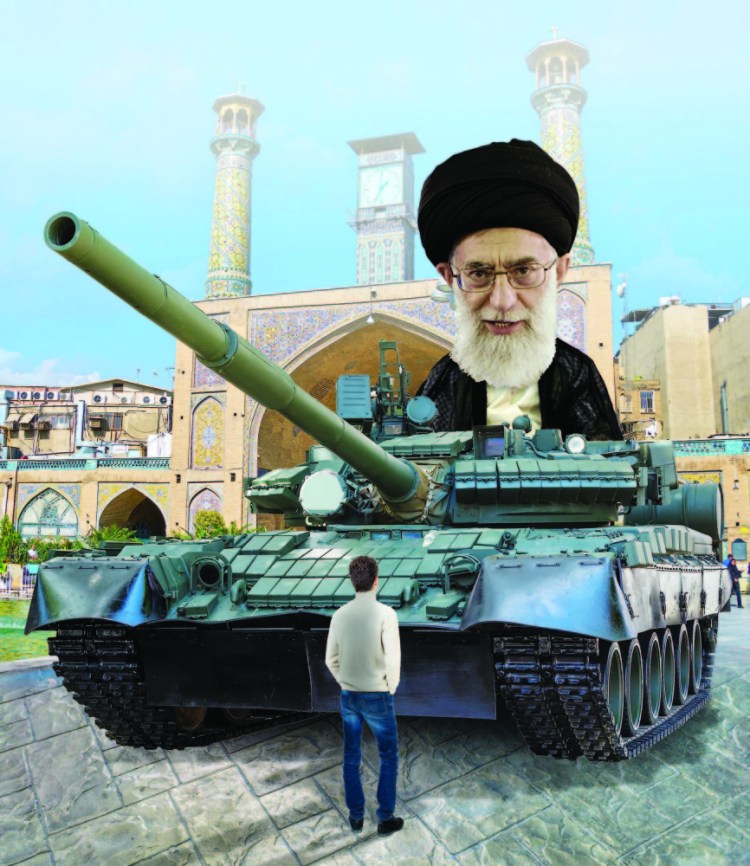Iranians are taking to the streets on a scale that hasn’t been seen in nearly a decade. Over the past six days, demonstrations have taken place in more than two dozen towns and cities, from the Shiite seminary town of Mashhad (Iran’s second-largest) to remote provincial centers and the working-class neighborhoods of Tehran. So far at least 20 people have been killed.
We have no way of knowing how this is going to end. The new generation of protesters – some of whom have torn down posters of Supreme Leader Ali Khamenei and staged attacks on police stations – appears to be fiercely determined. But the Iranian state is equipped with a gigantic apparatus of repression that is primed to crush even the slightest signs of dissent.
Whatever its ultimate consequences, the current surge of unrest is already a significant watershed in the history of modern Iran. Previous generations of demonstrators still harbored the hope that the theocratic system could be changed from within. They believed that by voting for reformist candidates, they could gradually coax it into something more open and democratic. The current protesters have given up that hope.
Why? One reason has to do with the so-called Green Movement of 2009. Back then, hundreds of thousands of Iranians took to the streets in what began as a protest against election fraud. Many of the demonstrators had cast their votes for reformist candidate Mir Hossein Mousavi. But the victory went instead to Mahmoud Ahmadinejad, whose supporters in the conservative clergy allegedly fixed the results on his behalf.
Members of the pro-Mousavi opposition – many of them young and middle-class – had fervently hoped that putting him into office would open up a new era of liberalization. When Ahmadinejad was declared the winner, it showed that the regime’s hard-line elements were not going to allow that. Protesters became radicalized, harshly criticizing the regime, and the crackdown that followed was predictably vicious. Some protesters were killed; we’ll probably never know how many for sure. Thousands were arrested or dispersed into exile.
The second blow to the dream of an Iranian perestroika has been delivered by the current president, Hassan Rouhani, who was elected to his first term in 2013 and re-elected last year. Posing as the new “reformist” candidate, Rouhani won votes by pandering to Iranians with vague promises of change.
He has signally failed to deliver. Iran’s nuclear deal with the West, which gave Tehran sanctions relief in turn for postponing its weapons program, was supposed to usher in a new wave of prosperity. It hasn’t happened. And Rouhani himself has shown that this failure was primarily Iran’s fault.
Late last year, he tried to make good on promises of transparency by publishing details of the national budget, but the move backfired. Many Iranians were incensed to learn that billions of dollars were going to obscure religious foundations run by regime notables – in addition to the vast government spending on Iran’s military adventures in Syria, Iraq and Lebanon. All this is taking place in the context of an economy where real youth unemployment is estimated at around 40 percent. It’s striking that the current cohort of protesters appears to embrace many young people of lower- or working-class origins.
Given all this, it’s easy to understand why the government’s announcement of a series of price rises for basic staples at the end of December triggered widespread anger. As we’ve seen in other autocracies in the past, economically motivated protests often morph into political ones over time.
In this case, though, the demonstrators’ concerns went almost immediately from the price of eggs to demands for regime change. Just three days in, the BBC was already relaying reports of an attack on the local headquarters of the pro-government Basij militia in the central Iranian town of Arak. In Mashhad, where the unrest began on Dec. 28, protesters actually tried to set a seminary on fire. In Tehran, others torched police motorcycles.
And the protesters certainly aren’t talking about illusory promises of reform. Their slogans are striking: “Death to the dictator” and “Clerics should get lost.” “Leave Syria, think about us!” “We don’t want an Islamic Republic.” “The Islamic revolution was our mistake.” It’s worth noting, by the way, that publicly disparaging Khamenei – as many protesters have so far done – is a crime in Iran that is subject to harsh punishment, including imprisonment and flogging.
Predictably enough, the Iranian authorities have tried to dismiss the unrest as the fruit of foreign machinations. But don’t expect the public to be fooled – it’s not the Saudis or the Americans, after all, who are responsible for the endemic corruption, the mismanagement, or the Revolutionary Guard’s monopolistic stranglehold over the economy. All these things show precisely why the current system – like the old Soviet Union – can’t allow reform without condemning itself to collapse.
The fact that many Iranians now seem to realize this does not bode well for the country’s future. By making true reform impossible, the current regime now seems determined to show that the only realistic option for change is one of violent confrontation – leading some citizens to express fear that their country could be heading down the road to “another Syria.” Let’s hope that they can find a way out.
Copy the Story LinkSend questions/comments to the editors.



Success. Please wait for the page to reload. If the page does not reload within 5 seconds, please refresh the page.
Enter your email and password to access comments.
Hi, to comment on stories you must . This profile is in addition to your subscription and website login.
Already have a commenting profile? .
Invalid username/password.
Please check your email to confirm and complete your registration.
Only subscribers are eligible to post comments. Please subscribe or login first for digital access. Here’s why.
Use the form below to reset your password. When you've submitted your account email, we will send an email with a reset code.